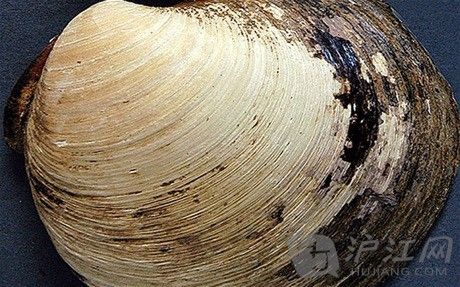太囧:世界最老生物被科学家弄死了(双语)
编辑点评:一只被证明是世界上最老生物的软体动物被科学家不小心弄死了,这似乎已经够糟糕的了。然而更糟糕的是,人们进一步研究发现,这只软体动物比人们想象的还要古老——它已经有507岁高龄。
 太囧:世界最老生物被科学家弄死了(双语)
太囧:世界最老生物被科学家弄死了(双语)When scientists inadvertently killed what turned out to be the world’s oldest living creature, it was bad enough。
一只被证明是世界上最古老的生物被科学家不小心弄死了,这似乎已经够糟糕的了。
Now, their mistake has been compounded after further research found it was even older – at 507 years。
然而更糟糕的是,人们进一步研究发现,这只软体动物比人们想象的还要古老——它已经有507岁高龄。
The ocean quahog - a type of deep-sea clam - was dredged alive from the bottom of the North Atlantic near Iceland in 2006 by researchers. They then put it in a freezer, as is normal practice, unaware of its age。
2006年,研究者们从冰岛附近的北大西洋海底将这只海蛤——一种生活在深海中的蛤蜊——活生生的捕捞上岸。他们并不知道它如此年迈,只是按照惯例将它放在冷冻箱里。
It was only when it was taken to a laboratory that scientists from Bangor University studied it and concluded it was 400 years old。
直到后来它被送往实验室进行研究,这时英国班戈大学的科学家们才发现它如此长寿,科学家们断言它已经有400岁高龄了。
The discovery made it into the Guinness Book of World Records however by this time, it was too late for Ming the Mollusc – named after the Chinese dynasty on the throne when its life began.Unfortunately researchers who calculated Ming’s age killed it instantly by opening its shell。
这一年龄上的发现使它被载入了世界吉尼斯纪录,然而此刻,对这只被命名为“明” 的软体动物来说,一切都为时已晚。名字取自它的生命开始时中国正经历的历史朝代。不幸的是,这些推测出了“明”年龄的科学家在打开它的壳的一瞬间已经弄死了它。
The researchers opened the ancient clam up to judge its age by counting growth rings inside.But the rings were so close together that scientists ended up having to count the rings on the outside to be accurate, leading CBS to point out that Ming could have lived on, had scientists just started there。
为了推测它的年龄,科学家们必须数清壳内部的线圈,所以他们打开了这只年迈的贝壳。可是这只软体动物壳内部的线圈实在是太密集了,为了力求准确,最后科学家们还是不得不从壳外部来数清线圈圈数。CBS新闻记者由此评论说,如果科学家们一开始就决定数清壳外的线圈数,“明”或许现在还活着。
Now, after examining the ocean quahog more closely, using more refined methods, the researchers have found the animal was actually 100 years older than they first thought。
现在经过更精密仪器的更细致研究,科学家们发现这只海洋圆蛤实际上比他们预先设想的还要老100岁。
Dr Paul Butler, from the University’s School of Ocean Sciences, said: “We got it wrong the first time and maybe we were a bit hasty publishing our findings back then. But we are absolutely certain that we’ve got the right age now。”
班戈大学海洋科学学院的劳尔 巴特勒教授说:“我们一开始就估计错误,也许我们当时发表自己的研究成果过于仓促了。但是现在我们能完全确定、我们估算出了它的准确年龄。”
A quahog’s shell grows by a layer every year, in the summer when the water is warmer and food is plentiful. It means that when its shell is cut in half, scientists can count the lines in a similar way trees can be dated by rings in their trunks。
在每年的夏季,如果水温适宜、食物充足,蛤蛎的壳就会长出一层线圈。这意味着,如果将蛤蛎的壳剖成两半,科学家们就能够通过壳的层数推算蛤蛎的年龄,就像根据树的年轮推算树的年龄一样。
The mollusc was born in 1499 – just seven years after Columbus discovered America and before Henry VIII had even married his first wife, Catherine of Aragon in 1509.
这只软体动物出生于1499年——它出生的时间比哥伦布发现美洲大陆只晚了七年,甚至在英国国王亨利八世与第一任皇后阿拉贡的凯瑟琳成婚(1509年)之前。
Jan Heinemeier, associate professor at the University of Denmark, who helped date Ming, told Science Nordic: “The fact alone that we got our hands on an animal that’s 507 years old is incredibly fascinating, but the really exciting thing is of course everything we can learn from studying the mollusc。”
丹麦大学助理教授杨 海涅迈尔也参与了对“明”年龄的研究。他对北欧科学协会说:“我们捕到了一只507岁高龄的动物,仅这一事实就够不可思议的了。不过,最不可思议的事情当然还是我们从这只软体动物的研究中可以获知的知识。”
- 英国百岁老太长寿秘诀:全靠抽烟喝酒(双语)2013-11-20 12:09
- 双语:真人演绎面试中最糟糕的握手方式(图)2013-11-20 11:54
- 恒大夺冠点燃希望:球迷叹狗不嫌家贫(双语)2013-11-20 11:35
- 2013职场十大趋势:更多女性成高管(双语)2013-11-20 11:28
- 一娃一狗幸福时光:萌宠萌娃如何相处(双语)2013-11-20 11:18
- 龙凤胎依偎洗澡:温情时刻走红网络(双语)2013-11-20 10:50
- 中国人变开放:半数人接受婚前性行为(双语)2013-11-19 19:23
